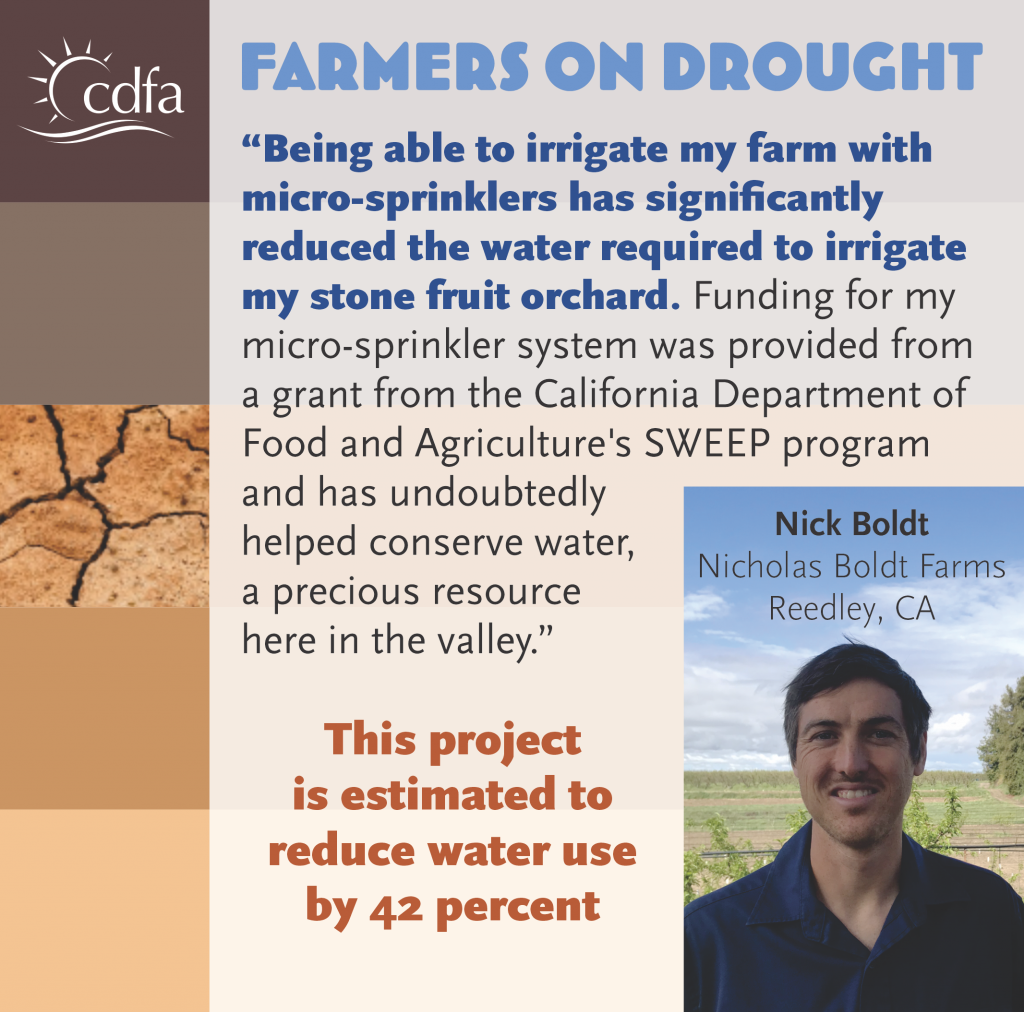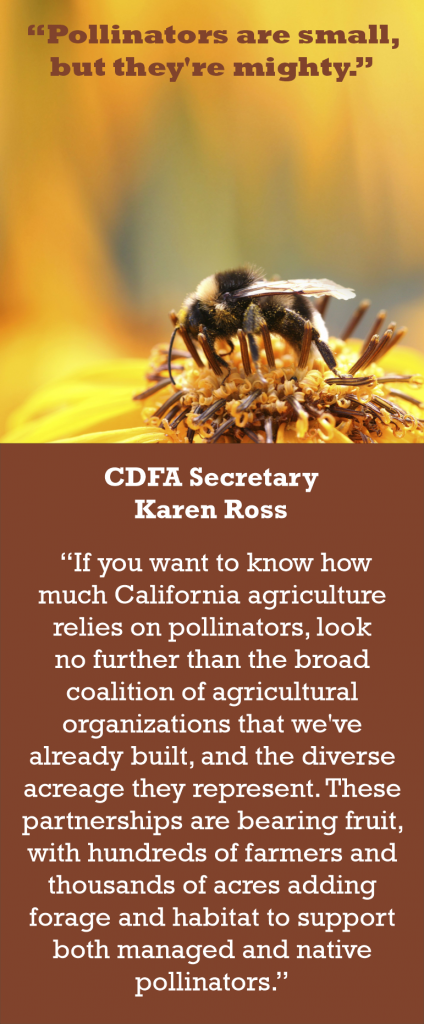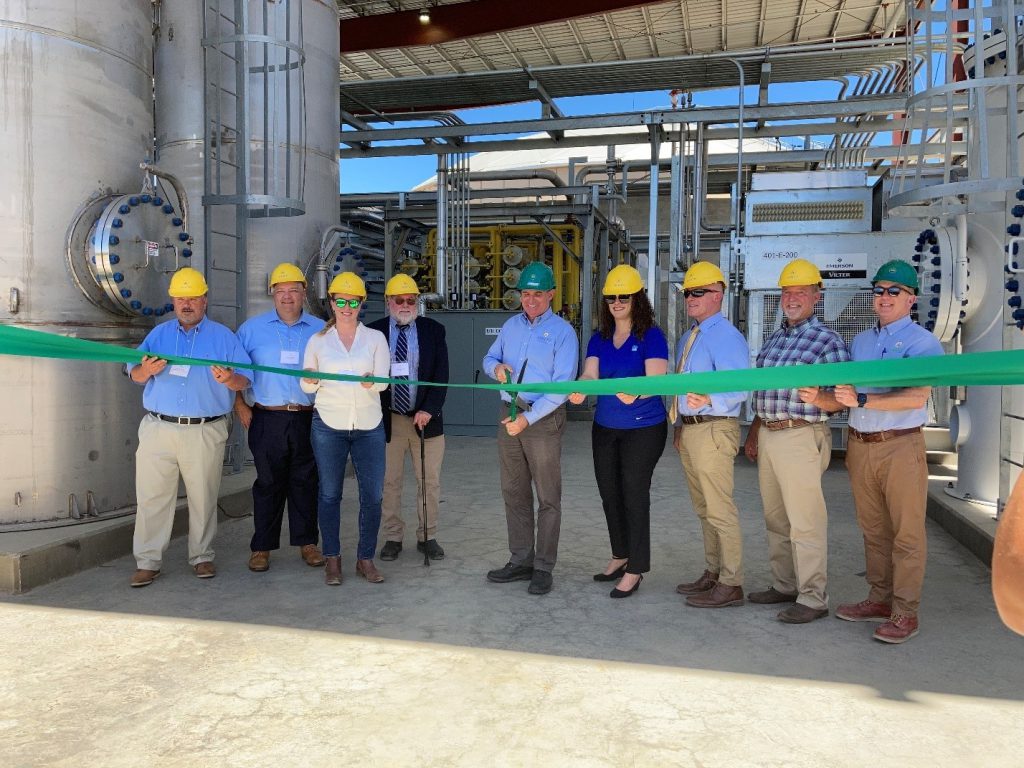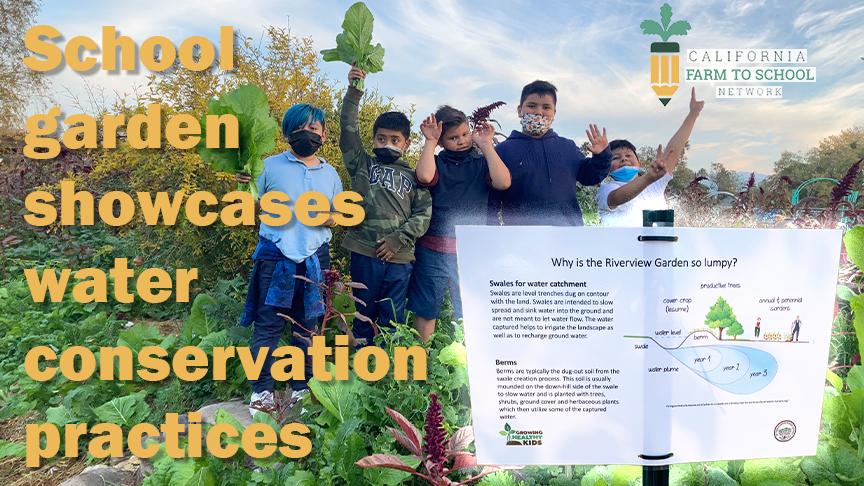Members note successful projects in celebration of National Pollinator Week June 20-26
A year after coming together to help make the agricultural landscape more friendly to pollinators, members of the California Pollinator Coalition say they’re gaining momentum, building stronger relationships between agriculture and conservation groups that are already increasing habitat on the ground.
The coalition – created in April 2021 and including more than 20 agriculture, conservation and government organizations – says it’s building a stronger network among these groups that has already led to new projects to expand on the success of the efforts of its individual member organizations.
“Thanks to the individual and collective efforts of our coalition members, we’ve seen a lot of positive developments over the past year,” said Laurie Davies Adams of Pollinator Partnership, one of the coalition’s founding members. “The State has also provided $30 million in new funding for pollinator projects, and we’ve seen more and more projects like cover crops and hedgerows installed among the state’s orchards, vineyards, rangelands and croplands.”
As the Coalition celebrates National Pollinator Week, June 20-26, it is assessing the progress its members have helped spur, which includes:
- More than 65,000 acres of pollinator forage added throughout the state on over 400 farms in the past 18 months.
- Approximately 340 acres of new and enhanced habitat installed in California for monarch butterflies, with another 40,000 milkweed plants planned this year.
- $30 million over two years earmarked by Gov. Gavin Newsom and the Legislature for sharing costs and providing incentives for farmers, ranchers and vineyard managers to create pollinator habitat on working lands.
- Working with researchers to advance guidance of habitat placement on farms and working lands.
- New partnerships built that launched current projects, including creating more California-specific guidance for growers and finding new funding.
“Pollinators are small, but they’re mighty,” said CDFA Secretary Karen Ross. “If you want to know how much California agriculture relies on pollinators, look no further than the broad coalition of agricultural organizations that we’ve already built, and the diverse acreage they represent. These partnerships are bearing fruit, with hundreds of farmers and thousands of acres adding forage and habitat to support both managed and native pollinators.”
One example of those partnerships is the diverse group of Coalition members – including Pollinator Partnership, the California Sustainable Winegrowing Alliance, the Wine Institute, the Almond Board of California, Blue Diamond, California Dairy, Inc., the California Cattleman’s Assoc., California Farm Bureau Federation, and Project Apis m. – that worked together to apply for a partnership agreement through the USDA-Natural Resources Conservation Service (NRCS) for regional farmer-to-farmer collaboration in 10 California counties on habitat installation and adoption of integrated pest management.
“We are determined to be part of the solution,” said Almond Board of California Chief Scientific Officer Josette Lewis. “Pollinators are crucial for our food production and for our entire ecosystem. All of us in agriculture understand that the most productive path we can take is to work together toward a common solution of protecting pollinators and the working lands of California.”
Lewis briefed Congress in 2021 about the Coalition’s brand of collaborative conservation. She detailed the ways it can be used as a model for protecting pollinators and for a range of other of effective environmental alliances among independent groups, including those who have not always been aligned.
“We need all hands on deck for monarchs and pollinators,” said Monarch Joint Venture Executive Director Wendy Caldwell. “That, of course, includes the agricultural community. I grew up on a farm and know firsthand the hard work, dedication and care farmers put into their land. At MJV, we recognize agricultural stakeholders as instrumental partners in reaching monarch habitat goals.”
Another achievement of the Coalition has been to send the strong reminder that everyone in California agriculture is a stakeholder in protecting pollinators.
“As part of the efforts of California winegrape growers and vintners to increase the sustainability of their vineyards and wineries, they have planted cover crops and hedgerows on thousands of acres,” said Allison Jordan, Executive Director of the California Sustainable Winegrowing Alliance. “Those acres provide habitat to vital pollinators while building soil health. Even though winegrapes are self-pollinating, all of us in California wine recognize the importance of pollinators to the state’s agriculture and food systems. That is why we’re partnering with likeminded organizations in the Coalition to increase resources to benefit even more pollinators.”
Entering Pollinator Week, the Coalition continues working to get the word out to more and more farmers about pollinator protection, funding, benefits and programs, including:
The Coalition continues to recruit partners who understand the urgency and share the common goal of supporting the health of both pollinators and agriculture. Current California Pollinator Coalition membership includes:
- Agricultural Council of California
- Almond Alliance of California
- Almond Board of California
- California Alfalfa and Forage Association
- California Association of Pest Control Advisers
- California Association of Resource Conservation Districts
- California Cattlemen’s Association
- California Citrus Mutual
- California Department of Food and Agriculture
- California Farm Bureau Federation
- California State Beekeepers Association
- California Sustainable Winegrowing Alliance
- Environmental Defense Fund
- Monarch Joint Venture
- Monarch Watch
- Pollinator Partnership
- Project Apis m.
- University of California Agriculture and Natural Resources
- USDA Natural Resources Conservation Service
- Western Growers
- Dr. Neal Williams, University of California, Davis
About the California Pollinator Coalition
The California Pollinator Coalition, convened by Pollinator Partnership, the California Department of Food and Agriculture and the Almond Board of California, is made up of a diverse group of agricultural and conservation organizations with the shared goal of providing enhanced habitat for pollinators. The Coalition and its members work to increase habitat for pollinators on working lands. Additionally, the group promotes research and tracks its progress toward healthy and abundant habitats.
See the original post on the Almond Board site here.









